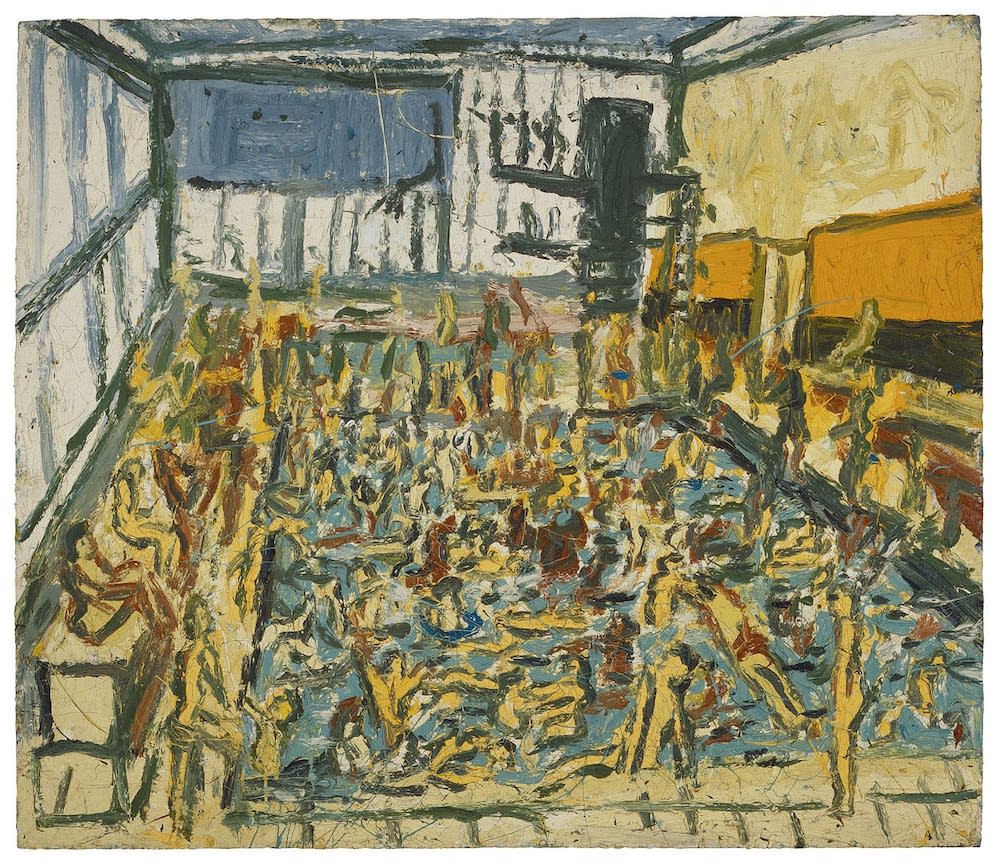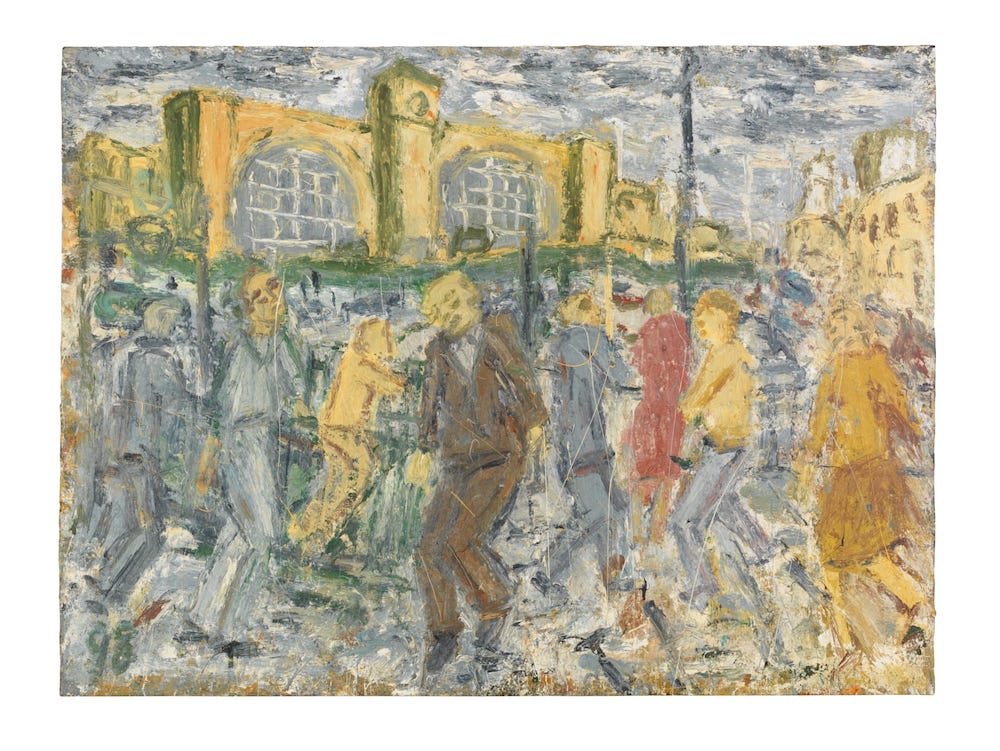Leon Kossoff | Annely Juda Fine Art
Along with bigger names like Lucian Freud and Francis Bacon, Leon Kossoff was part of the School of London, painters who passed a pitiless eye on the down-at-heel postwar capital city, pre Olympics, pre Millennium Dome, pre Big Bang boom. A fine retrospective selection of Kossoff’s work - the artist died in 2019 - is on show right now at Annely Juda Fine Art.
Kossoff’s subject matter is firmly rooted in the city he rarely left. The parts of the city that he liked to paint, again and again, weren’t very glamourous. But the eye he cast on them always seems to have been humanistic and kind. Witness Children’s Swimming Pool, Autumn, from 1972. You can practically hear the joyful shrieks echoing off the tiles of the tiny, packed pool; but then again, the light outside is dingy, and a big section of those tiles is in the most shockingly hideous orangey-yellow. It’s defiantly unpretty, but also, somehow, touching.

Kossoff really focussed in on a few areas of London: Whitechapel, Spitalfields, Kilburn, Dalston, King’s Cross. None of which would have been of particular interest to an aspirational Londoner at the time, though all now are very desirable areas to live in. Kossoff was interested in the great urban renewal that started grinding its gears into action in the 1950s and 60s following the wartime bombings, painting the great building sites of the Shell Centre on the South Bank and the YMCA building in Tottenham Court Road.
I was moved by his scenes from a place that’s still pretty grungey, Willesden Junction: just like Prunella Clough, whose own show at Annely Juda I covered a couple of months back, Kossoff explored the train yards and lines around that North London station interchange. “Railways open up the territory,” he explained. “They give you space, and they give you light, and they give you movement.”
Kossoff painted the trains from the bottom of his garden (he eventually settled around Willesden). He picked out their British Rail livery, it being pre-privatisation and all that - yellow front, blue sides. And then, towards the end, he switched to a terminus. King’s Cross, March Afternoon, from 1998, picks out the roomy arched windows of that great early-Victorian building, as well as the hideous dark green canopy with its dingy shops that disfigured its forecourt, up until very recently.

His figures are ephemeral somehow, subordinate to the buildings and inanimate objects he lavishes care on, and the light that plays on these buildings. Kossoff’s portraits are much less interesting to me.
He began with using enormously thick wedges of oil paint, layered over and over, sticking out quite a way from the canvas. Viewed on a sunny day, the great landscapes, especially ones from the 1960s and 70s, were almost sculptural.
The layers thinned out towards the end: the exhibition has one of Kossoff’s very last pictures, of a cherry tree in his garden, and it’s almost ghostly. But his keen eye and profound sensitivity to light, and the city the light is cast on, stayed true throughout.
It was good to read in the show notes that the exhibition will move on to New York and Los Angeles in 2022. From London, from the past, to the new world and the future.
Leon Kossoff is at Annely Juda Fine Art (London). 30 September - 04 December 2021